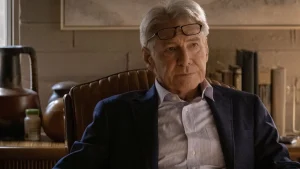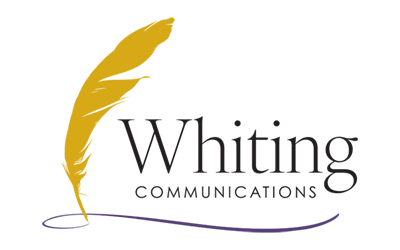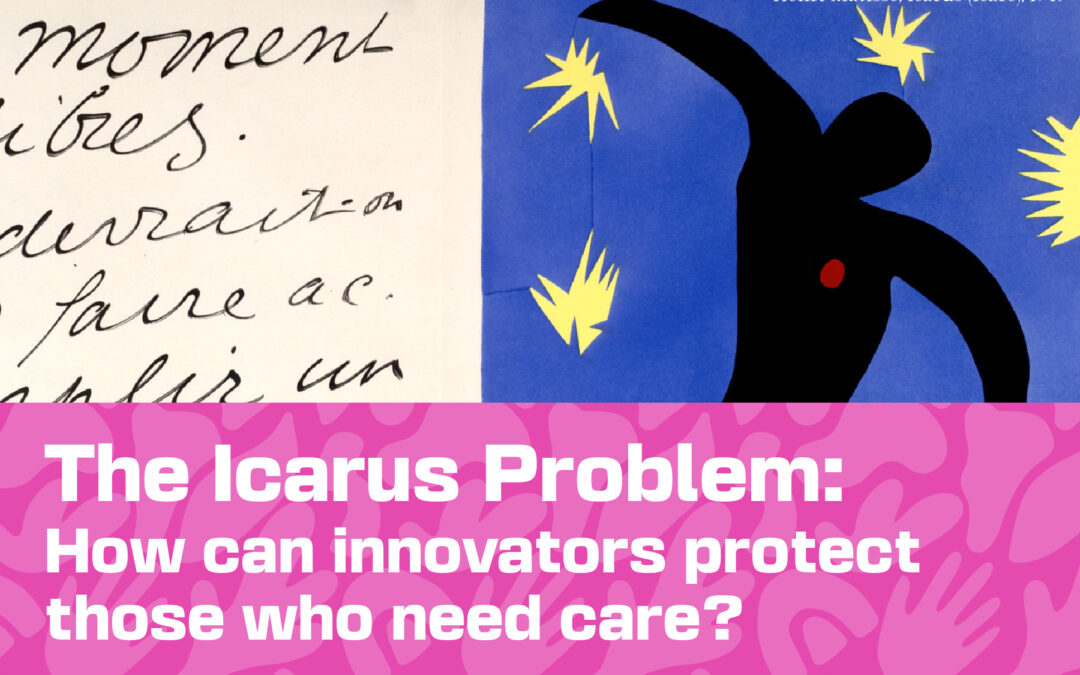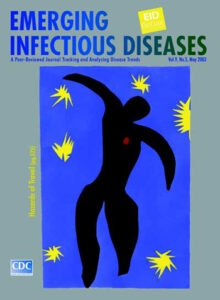HOW WE CARE \ Vol. 1 Issue 2 \ November 2024
Medical devices, precision care, and a flu+COVID-19 at-home combo test are shaping the ways and places caregiving and medical care can occur, but are there enough guardrails in place?
In this edition
-
Publisher’s Note: What does it mean to “care anywhere”?
-
People with disabilities face challenges when tech warranties expire
-
DNA in the ER: A new setting for precision medicine
-
FDA approves first at-home flu, COVID-19 combo test outside of emergency use
-
Care conversations in the wild
-
Pop culture caring
What does it mean to care anywhere?
Dorothy knew better than most that there’s no place like home, and since the pandemic, we can’t help feeling the same way. From workers resisting the call to “Return to Office” to older adults asking for home-based care, the data doesn’t lie. We want to grow older on our terms, close to the people we love. We want to age with dignity and independence at home.
And now, thanks to technology and an evolving understanding of shared decision-making, healthcare has become democratized in ways we wouldn’t have thought possible twenty years ago. Mobile applications like BetterHelp are replacing in-real-life therapists; consumer technology like Apple Airpods are getting FDA approval as medical devices for hearing impairment; and companies like CVS are expanding their Minute Clinics to include primary care offerings with payors like Aetna. Services once only available at brick-and-mortar offices are now in our back pockets and yards.
Yet what is the limit on these home-based interventions, and how do they account for the additional labor these innovations put on the family caregiver? In other sectors, companies like Uber and Lyft put the power in the hands of the rider, only for its disruptive innovation to morph into unregulated taxi services. Democratized methods of communication, led by social media companies like Facebook, face new scrutiny for being tools for misinformation.
The idea that we could receive or give “care anywhere” on our own terms certainly has a nice ring to it. Let’s go down the yellow brick road — but make sure that we’re prepared for the adventures and dangers we’ll find.
Very truly yours,
Grace
People with disabilities face challenges when tech warranties expire
Michael Straight was paralyzed 15 years ago in a horse racing accident but regained the ability to walk with a $100,000 exoskeleton purchased in 2014. That is until he was returned to a wheelchair when a $20 battery in the watch controller failed.
Straight struggled to get in touch with the manufacturer, and when he finally could, he was told they no longer worked on any machine over 5 years old. After significant public pressure and intervention by Florida news channels, exoskeleton manufacturer Lifeward replaced the defective parts, and Straight is back on his feet once more.
But no one can definitively say for how long.
It’s easy to see this as a David-vs-Goliath story of an individual with a care need fighting against a large corporation. But the broader concern here is the warranty and lifetime of the devices—and their components—that people rely on for care and support in their homes and communities. At any point, a wide range of issues, from time or wear-and-tear to bankruptcies and patent sales, can cause a device to stop working or no longer be supported.
Mobility devices have very clear effects when they fail. Individuals may lose critical functions, such as the ability to walk, and enhanced hearing or vision, and may run the risk of dangerous falls and other injuries.
Cutting-edge technologies raise a new risk, too, especially devices planted into organs or the brain. When a company no longer supports these devices, the individuals who rely on them face significant risks. When these devices begin through the work of tech startups with a significantly high failure rate, how are we protecting the people who rely on this tech for their everyday activities?
Perhaps mobile tech creators should take a page from the pharmaceutical industry, where innovative medicinal products that are still in development are available through early access programs before they are released to the general public. Researchers have long acknowledged the challenges that face drug sponsors when a potential drug fails, forcing patients to return to their previous standard of care. As of now, there are fewer protections for patients in the mobile tech world.
One can’t help but think of Oliver Sacks, the English neurologist played by Robin Williams in the 1988 film Awakenings. Dr. Sacks worked with survivors of encephalitis lethargica, a “sleeping sickness,” who had been comatose since the First World World. By the 1960s, patients with the disease had been institutionalized and required around-the-clock care as they could not communicate or move. Using the experimental drug levodopa, his patients began to walk and talk again – only to lose their functions shortly later when the drug failed.
In letters recently published in The New Yorker this fall, Dr. Sacks speaks of the joys and grief of innovation.
Writing to a friend in 1969, he shares the initial miracle of the new drug:
I have started the intensive work on my Parkinson patients . . . and I have had the intoxication of seeing l-DOPA, a ravishing drug, restore to an incredible life . . . patients who had been almost literally turned to stone, speechless, motionless, and even thoughtless, for twenty years or more by the horror of their disease. My first patient, a man of fifty, who had had the severest Parkinsonism since the age of fifteen and had not spoken or moved for more than ten years, said (his first words): “I am reborn. I have been in prison for thirty-three years. You have released me from the custody of my symptoms.”
Yet as the drug and treatments progressed, Dr. Sacks faced new roadblocks, including restrictions on day trips for the patients in his care. “It is a great cruelty to activate these patients and then deny them activity, to animate them and then deny them the amenities of life,” he wrote.
By 1970, after the failure of his clinical research, Dr. Sacks wrote eloquently to his brother Michael about how to live independently with schizophrenia across various settings of care:
“One general thing is quite clear, and a requisite for your survival (as a person). You must have some third mode of existence, some middle ground, between living at Hospital (which, with the exhaustion of its initial promise, is barely tolerable for you) and living at home (which is less tolerable): you must have some middle ground between feelings of doom . . . and fantasies of redemption. . . . Above all, you must secure some release from your conscience, which is the most merciless I have ever known: like Kafka, you labor constantly under a sense of infinite guilt. . . .
I spend a great deal of my life in just this paranoid posture, filled with feelings of hate, vengeance, abjection, hopelessness. And I too (though obviously much less than yourself) regard every moment as a moment of crisis, full of threat and promise. . . .”
Curious about other products that stopped working, impacting health care and daily life?
- A brain implant changed her life. Then it was removed against her will.
- Bionic eyes go blind after company stops supporting implants
- People are forced to learn complex coding to keep using devices for migraines
- Some cochlear implant users can’t afford to keep up with compulsory upgrades
- A maker of spinal cord stimulation devices went bankrupt in 2019, though some users had expensive alternatives available
DNA in the ER: A new setting for precision medicine
In a perfect world, our interactions with the emergency room (ER) would be limited to revisiting George Clooney’s Dr. Doug Ross in the beloved 1990s TV series. Yet, for people living without health insurance or access to a primary care doctor, the ER may be the first point of contact with healthcare providers.
According to the CDC, more than 61% of emergency room visits are by patients with one or more chronic conditions. For some of these patients, the ER has become a stand-in for a community clinic or local provider. (See NPR’s story about how to help patients who show up at the ER 100 times a year.) Emergency departments, by their nature, aren’t equipped to manage chronic healthcare needs and long-term illnesses like cancer. So, what does it mean to integrate personalized medicine with emergency care?
As the National Human Genome Research Institute defines it, “personalized medicine” is an “emerging practice of medicine that uses an individual’s genetic profile” to guide decisions about prevention, diagnosis, and treatment. Groups like the Personalized Medicine Coalition frame it as a school of thought that helps physicians gain a “better understanding of the molecular characteristics influencing a patient’s health.” (Critics note that in addition to privacy and access concerns, personalized medicine can also be used to deny treatment if the clinical data is not robust enough.)
Typically, personalized medicine goes hand in hand with understanding a disease’s genetic origins. Think of cancer, rare genetic diseases, and other conditions typically treated by specialists after a patient is diagnosed and has had an initial touch base with their primary care doctor.
Yet, Emergency Medicine (EM) leaders are considering how precision medicine can support people whose first point of contact with the health system may be a physician in the ER.
Physicians from Departments of Emergency Medicine across the U.S., from Stanford to Yale to UT Austin, have advocated nationally through a unified definition and clear research agenda. Their work began with creating a national consensus conference to build a shared mental model and develop a research agenda for precision EM, writing up their findings in Academic Emergency Medicine. The conference created a unified definition of precision emergency medicine and outlined crucial research questions for a 10-year research roadmap. Ongoing research is looking into key drivers of integrating precision medicine into clinical practice and understanding challenges and opportunities for precision medicine education in EM.
This expansion will likely be a hot topic at the 18th Annual Personalized Medicine Conference put on by the Personalized Medicine Coalition this week (November 12 – 14) in Boston. If you’re going, here are a few papers worth reading ahead of time:
FDA approves first at-home flu, COVID-19 combo test outside of emergency use
The U.S. Food and Drug Administration has granted marketing authorization for the Healgen Rapid Check COVID-19/Flu A&B Antigen Test, with no prescription required. The test is big news for a couple of key reasons:
For innovators: This is the first over-the-counter (OTC) test to detect influenza to be granted marketing authorization using a traditional premarket review pathway. That means it can be marketed without an applicable emergency use declaration. Currently, other OTC flu and COVID tests are only available under emergency use authorization. In its trials, the test correctly identified 99% of negative COVID cases and 99.9% of negative Flu A and B cases. It had strong accuracy for positive SARS-CoV-2 samples (92%), Flu (92.5%), and Flu B (90.5%). As with other rapid antigen tests, false negative results are still risky.
The test uses a nasal swab that many of us have become all too familiar with, and the results take roughly 15 minutes.
For caregivers: Not needing a prescription and greater availability will help people test for the Flu and COVID without a visit to a primary care doctor or an emergency care setting. This can reduce the exposure of caregivers and the people receiving care to potential illness and infection risks. Those reductions are especially important for immunocompromised individuals, such as cancer patients, and for people whose caregivers work or struggle to arrange transportation. There typically will be more opportunities to stop by retail locations to pick up these tests, making it easier for testing to be part of the regular care routine.
For the future: As part of this work, the FDA is also creating special controls that define labeling and performance testing requirements. These aim to provide assurance of safety and effectiveness for future COVID and flu tests when they meet the special and general controls. They also create a new regulatory classification that will reduce future marketing clearance barriers for subsequent devices of the same type.
The device was partly funded with federal funds from the National Institute of Biomedical Imaging and Bioengineering (NIBIB), National Institutes of Health, Department of Health and Human Services.
Care conversations in the wild
- Caregivers remain an important voting bloc, with appeals from both Vice President Harris and incoming President Trump in the final days of the 2024 Election. Pitches have included expanding Medicare to cover home care, offering tax credits to family caregivers, and expanding Medicare drug price negotiations.
- U.S. Congressman Gottheimer (NJ-5) announced a new “Family Caregiving Plan” with a bipartisan Caregiver Financial Relief Act. New Jersey has more than 1 million family caregivers in the state. The proposal would ease penalties on withdrawing from retirement plans for caregiving expenses, add tax credits related to caregiving expenses, and allow FSA plan funds to be used for caregiving.
- The National Institute on Aging has awarded a $5.5 million grant to Emory University Nell Hodgson Woodruff School of Nursing to lead a longitudinal study on how informal caregiving networks affect persons living with dementia (PWD) and their caregivers. The grant will allow Professor Mi-Kyung Song, PhD, RN, FAAN to recruit roughly 900 “caregiver informants” and follow them for more than two years. (If you’re working in this area, don’t miss the recent study on caregivers of PWD looking at a transactional model of stress and coping with depressive systems).
- A new report (PDF link) from Columbia University Mailman School of Public Health, sponsored by Otsuka America Pharmaceutical, Inc. (Otsuka), says the economic labor of caregiving is worth $873.5 billion. Individual caregivers who start providing care early risk up to a 90% deficit in their retirement savings. The report values Alzheimer’s disease or dementia care at $346.6 billion, or 40% of the total family caregiving valuation. Otsuka makes the Alzheimer’s anti-agitation drug REXULTI.
- Advocacy organizations continue to champion caregivers this month, which was been officially designated National Family Caregivers Month by the President. Caregiver Action Network, which leads the month’s theme, has a social media kit for advocates here. The National Alliance for Caregiving will host its annual “Caregiver Nation Summit” next week in Washington, DC. Finally, private sector ARCHANGELS launched a new, free initiative called “The Care Badge” with the Joint Commission, which is an awareness initiative to recognize the skills and value offered by family caregivers to other sectors of their lives.
- Other notables:
- The U.S. Department of Labor has launched a new tool offering over 700 workplace accommodation ideas to support workers with disabilities.
- Harvard Business School: Rigid practices make work difficult for millions of caregivers while also hurting companies’ bottom lines. (Full report)
- CAHPS published a new chartbook to help parents evaluate child hospital services
Pop culture caring
Recent films, memes, and media to keep up your caregiving ‘rizz.
TV

Actor Harrison Ford, whose character is living with Parkinson’s disease, in the Apple+ show Shrinking
The breakout Apple TV+ show Shrinking (2024) has kicked off its second season and provides a nuanced look at caregiving in multiple settings. Harrison Ford plays a therapist struggling with a recent Parkinson’s diagnosis, with a gruff exterior not unlike a young Han Solo yelling at Chewbacca. Comedians Jason Segel and Jessica Williams grapple with survivor’s guilt after a car accident kills a close friend and spouse. And Luke Tennie plays a wounded warrior grappling with post-traumatic stress.
The show illustrates the challenges of introducing mental health conversations in communities that are typically suspicious of therapy. And it shows that those in caring professions — like therapists — struggle with their own compassion fatigue, burnout, and boundaries. Showrunners indicate that this season will focus on forgiveness, acceptance, and making amends — relevant themes for caregivers grappling with their feelings while caring for someone else.
Film
Bradley Cooper and D.C.-based public broadcaster WETA are creating a Caregiving series coming to PBS in 2025. The documentary series will feature various stories from caregivers, including Josh Carter, grandson of Jimmy and Rosalynn Carter. Josh was a youth caregiver for his maternal grandmother after she suffered a stroke and now cares for his youngest son, Jonathan, who was diagnosed with a rare intestinal disorder as an infant. Stay tuned.
Art
French artist Henri Matisse famously created his series of cut-outs (or as he called it, “drawing with scissors”), radically transforming the world of modern art in a post-WWII landscape. Icarus (Icare), part of his Jazz series, depicts in part, the horrors of war. After several members of his family who resisted Nazi occupation were captured, imprisoned, or tortured, Matisse nearly died of illness in 1941 and was left permanently disabled by surgery. Against this background of grief, he created Icarus after the famous Greek myth of the child who flew too close to the sun with waxen wings.
Surrealist writer Louis Aragon described this piece as “like a corpse” with splashes of yellow that mimic the exploding shells of the frontline. The Metropolitan Museum of Art offers that while made under the “horrific circumstances of war, illness, and separation of his family,” the piece’s bold visual style and bright colors also provide a moment of reflection and joy.
See it live at the Museum of Modern Art in New York, where it is now on view. Or, for a brief, public health perspective on Matisse, check out the forward from a 2003 edition of the CDC Journal, Emerging Infectious Diseases, which featured the artwork for its cover.
Nothing is more fundamental to the human experience than how we care for each other. A social impact education project of Whiting Communications, How We Care is for everyone interested in the human connections that bind us together. Get it in your inbox by subscribing here. How We Care is published by Whiting Communications, LLC, and written and edited by C. Grace Juneau Whiting and Geoff Whiting. All rights reserved.
Want to share your news, thoughts, and more? Contact us at hello@whitingcommunications.com



